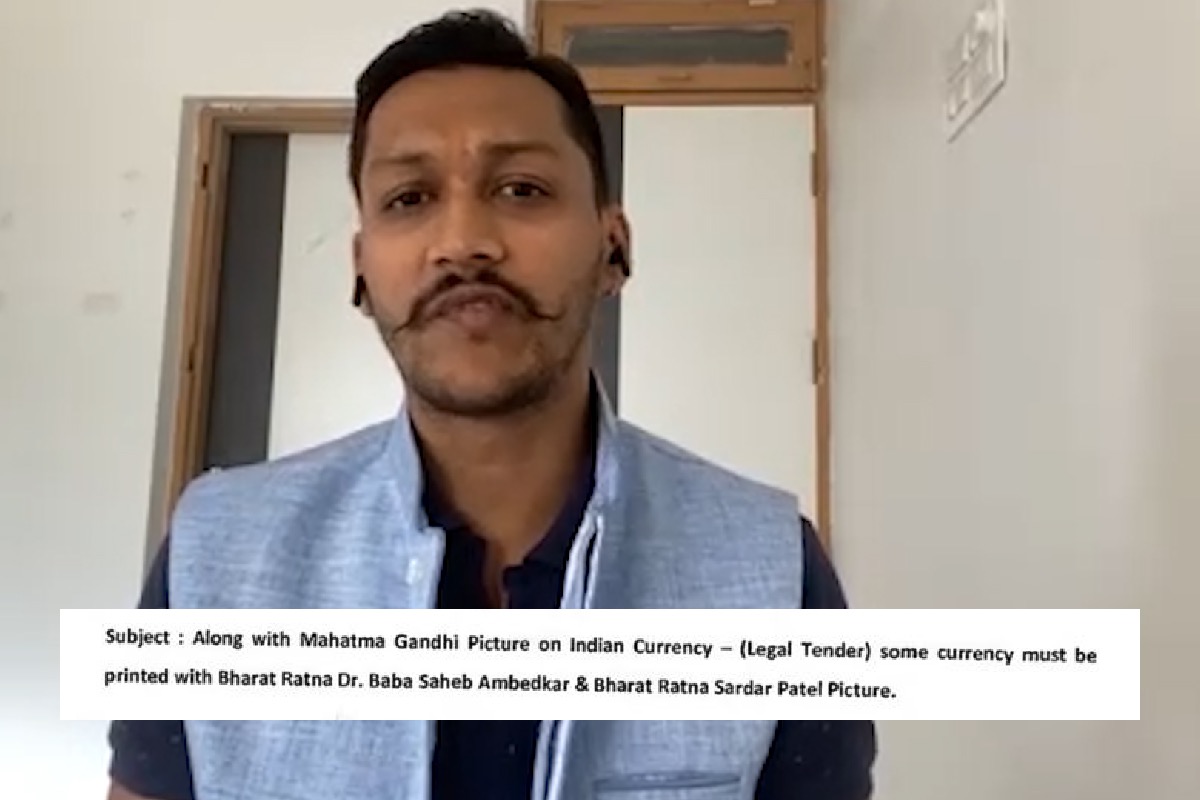In 2019, Special Officer in the Uddhav Thackeray administration, Prafful Sarda shot a letter to the Prime Minister’s Office asking if a currency series can be released with pictures two stalwarts of Indian politics — Babasaheb Ambedkar and Sardar Patel. His office was flooded with requests on new currency series on other great sons and daughters of Mother India.
Since he was posted in Maharashtra, a considerable number of people wanted Chhatrapati Shivaji on their notes. There were some requests for Bhagat Singh as well. But the maximum queries were for Ambedkar and Patel, which prompted the 35 year old to write to the PMO and propose the same. He got an answer in January next year.
This exchange between Sarda and the PMO is even more relevant today after Delhi Chief Minister Arvind Kejriwal in a dramatic press conference on Wednesday demanded that Goddess Laxmi and Lord Ganesha’s pictures be put on Indian currency.
The comment has ignited extreme views from all ends of the political spectrum. Some have pointed out that the AAP leader is trying to outsmart BJP at its own game and it’s a strategic move before the election in Gujarat, where the party is fighting tooth and nail to gain some foothold.
The political aspect of the statement aside, what one needs to delve into is the logistical and legal possibility of such a drastic change on our currency. Is this change even possible? Is it as easy as Kejriwal makes it sound?
The letters of proposal and PMO’s response shared by Sarda may hold the key to some these crucial questions.
The letter written by Sarda went with the subject line: “Along with Mahatma Gandhi Picture on Indian currency – (legal tender) some currency must be printed with Bharat Ratna Dr Baba Saheb Ambedkar and Bharat Ratna Sardar Patel Pic (sic)”
Here’s a copy of Sarda’s letter to the PMO:
In January 2020, the Prime Minister’s Office uploaded its response on its portal which said that a panel of experts from various fields formed by the RBI came to the conclusion that no one other than the Father of the Nation, Mahatma Gandhi better represented Indian ethos.
“A high Level Screening Committee constituted in 2010 by Reserve Bank of India on note design deliberated at length about the need for inclusion of other eminent personalities like Bharat Ratna awardees, Nobel Laureates, eminent sport persons, freedom fighters etc. on bank designs and decided that no other personality could better represent the ethos of India than Mahatma Gandhi,” the response read.
The government approved the recommendations of the panel and that’s the reason Gandhi continues to be only person Indian currency.
Under the Reserve Bank of India Act (section 22), the Bank has the ‘sole right’ to issue currency notes in India. Section 25 states that the design, form and material of bank notes shall be such as may be approved by the Central Government after consideration of the recommendations made by the Central Board of RBI.
The Reserve Bank in 1969 came out with a commemorative note of ₹100 showing Mahatma Gandhi. But it was the portrait image. The note had him with an image seated in the backdrop of the Sevagram Ashram.
The portrait Gandhi became a mainstay currency notes only in 1987 when the series of rupee 500 currency notes showing a smiling Gandhi was launched in October that year. Since then Mahatma Gandhi’s portrait has been used regularly on currency notes of different denominations.
Currency notes have always reflected the changing mood and political reality of its time. According a RBI paper available online titled “Currency: Changes and Challenges”, the head of the king-emperor were replaced by Ashoka Pillar to reflect the inauguration of the Republic on 26 January 1950 and the vesting of sovereignty in its citizens. The paper further states, “the political and constitutional changes of the preceding decade led to a growing demand from the early fifties for currency notes to carry their value in different languages. Finally in 1958, the Finance Minister and the Governor decided that new Bank notes would carry their values in all the fourteen languages included in the Eighth schedule in the order in which they were listed there.”
With increasing political cacophony around who should adorn the currency notes along with Gandhi, it remains to be seen if the government makes any manoeuvres in this regard.
Watch the video here:
Video | Can rupee have any picture other than Mahatma Gandhi's?
In 2019, political analyst @prafful_sarda put in a request for currency series on BR Ambedkar & Sardar Patel.
In exclusive chat with @TheNewIndian_in he shared what @PMOIndia's response was.
Report by @Somi_Das pic.twitter.com/ndjjNwtaT4
— The New Indian (@TheNewIndian_in) October 26, 2022

